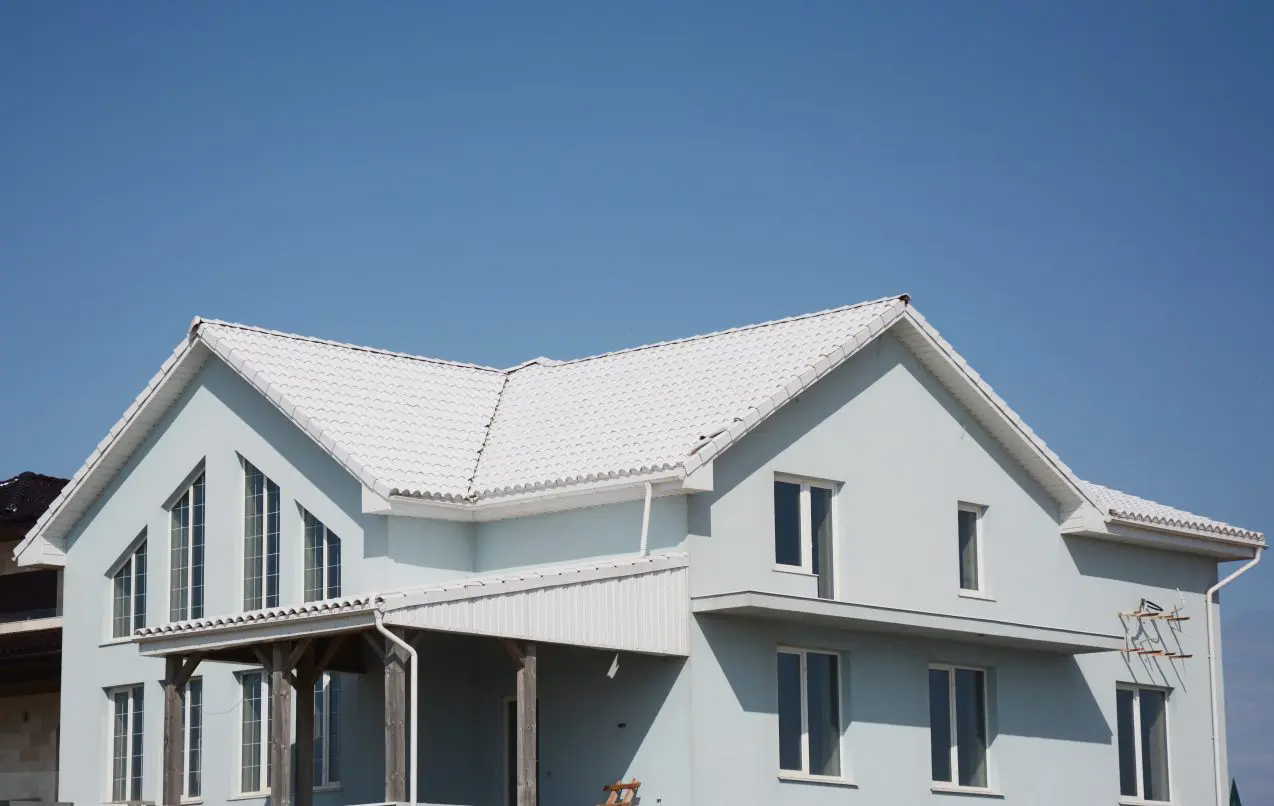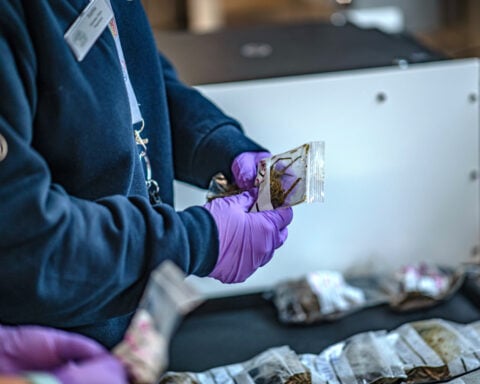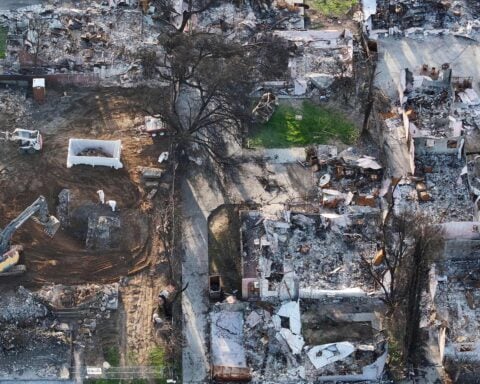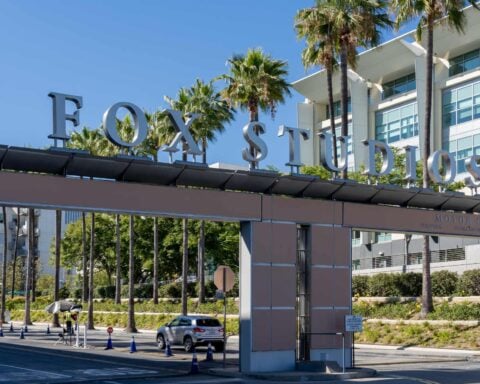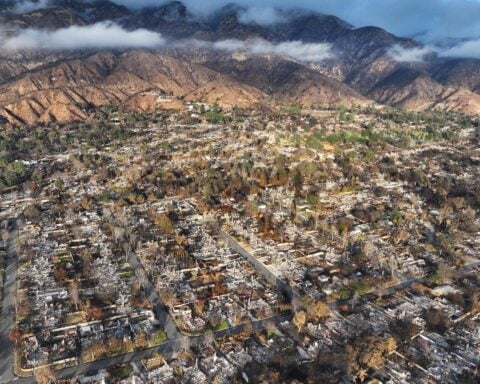Homeowners in Los Angeles who want to stay cool and reduce energy expenses are opting for "cool roofs" - roofs constructed with reflective materials that absorb less sunlight. Due to climate change causing higher temperatures, cool roofs offer a straightforward option to reduce excessive roof heat absorption. Studies indicate that they have the potential to decrease air conditioning usage by an average of 20% and lower indoor temperatures by as much as 10 degrees Fahrenheit. "A roof and a wall that reflect light are straightforward and dependable passive methods that only require you to make the correct decision when it's time to replace the roof or repaint," stated Ronnen Levinson, a researcher at the Lawrence Berkeley National Laboratory who specializes in studying materials with cooling properties. “It will help you now, and it’ll be even more useful as the climate warms.”
The concept of cool roofs dates back centuries, with light-colored buildings characterizing hot climate cities in the Mediterranean and Middle East to reflect sunlight. In 2005, California established the first statewide building codes mandating white commercial roofs to reduce the urban heat island effect. Los Angeles went further in 2015 as the first major U.S. city to require all new and replaced residential buildings with cool roofs. Homeowners who want to install a cool roof now have two choices: they may either apply a reflective coating to their current roof or install new reflective shingles when they need to re-roof.
Both cool roof coatings and shingles have the goal of maximizing solar reflectance, which means they reflect sunlight back into the sky instead of absorbing heat. This is assessed on a scale from 0 to 1, with higher numbers indicating greater reflectivity and less heat retention. Dark roofs absorb up to 95% of sunlight, while some cool white roofs can reflect 85% or more. Although white is the most reflective color, companies now offer “cool color” options in darker hues that still provide heat emission.
While cool roofs may increase winter heating costs, research shows the increase is small compared to summer savings on air conditioning. Some “smart roof” technologies also help address seasonal differences. Along with energy savings, cool roofs extend roof lifespan by reducing surface wear from heat stress. Widespread adoption can cool entire cities and slow smog formation by lowering surrounding air temperatures.
Homeowners looking to install a cool roof have two options: Coating Application - For those not yet needing a new roof, coatings can be applied to existing roofs to increase reflectivity. This is the more affordable cool roof option. New Shingles - Homeowners who are re-roofing can install new reflective shingles, which provide a longer-term cool roof. Costs are comparable to traditional asphalt shingles.
The nonprofit Cool Roof Rating Council evaluates and lists over 3,000 approved cool roofing products. Major shingle manufacturer GAF is among leading companies supplying cool roof options. Homeowners should verify contractor experience with cool roofs and check licensing when hiring for installation. Some utilities, like the Los Angeles Department of Water and Power offer rebates to offset costs.
With LA’s urban heat island effect amplified by extensive concrete and pavement, dense neighborhoods with older homes stand to benefit most from cool roofs. Low and moderate-income households lacking shade trees gain affordable relief from excessive heat. Alex Turek of nonprofit GRID Alternatives, which installs free solar panels and cool roofs in underserved communities, said cool roofs provide comparable heat reduction to trees. “Cool roofs can definitely provide similar benefits to trees,” he said, adding, “There's such a hardscape that trees may not be an option for some homeowners."
Scientists say scaling up cool roofs across Los Angeles buildings could significantly cool the region while curbing energy demand and costs. For homeowners like Denise Davis of Crenshaw Manor, who asked about the feasibility of cool roof paint, the benefits are clear and within reach. “Ever since people have lived in hot places, they've tried to do the sensible thing, which is keep the building cool by absorbing less sunlight at its surface,” Levinson said. “North American architecture hasn't always worked that way.”
With extreme heat now routine across the Southwest, sensible design matters more than ever. As climate change accelerates, the case for cool roofs as a simple, proven way to emit heat from Los Angeles rooftops rather than absorbing it continues gaining traction. Homeowners should consider installation costs, aesthetics, and estimated energy savings when evaluating adding a cool roof.
White coatings are the most affordable cool roof solution but limit color options. New cool-colored shingles are pricier but provide more choices like terra cotta, gray, and tan. Homeowners can input their address on the Department of Energy's Roof Savings Calculator to estimate potential cost savings from increased roof reflectivity. Variables like local climate, utility costs, roof pitch, and insulation impact savings.
Properly installing a cool roof requires roofing contractors experienced in assessments, repairs, coatings, and reflective shingles. The nonprofit Cool Roof Rating Council offers a directory of qualified contractors. Some local utilities provide rebates or incentives for cool roof projects, reducing upfront costs. Homeowners should verify licensing, insurance, warranties, and references when selecting a roofer.
While cool roofs don't eliminate the need for insulation, they work synergistically to reduce heat transfer into a building's interior. Combining a cool roof with proper attic ventilation, radiant barriers, and insulation offers optimal summer energy performance. Homeowners should consider cool exterior paints or shade trees to further mitigate solar heat gain.
Scientists say scaling reflective roofs across Los Angeles could lower the city's temperature by 2 to 3 degrees Fahrenheit on hot days. This would significantly cut air conditioning costs and greenhouse gas emissions. Widespread cool roofs can also improve air quality by slowing the chemical reactions that create urban smog in hot weather. More modestly, an individual cool roof provides a homeowner direct economic and comfort benefits.
With global temperatures projected to rise precipitously in coming decades, reflective roofs offer a proven method to emit solar energy back to the sky rather than trapping heat. "A reflective roof is very much like a renewable energy source,” Levinson said. “It reduces heat gain without any ongoing costs.” As heat waves worsen, this simple tech will become increasingly sensible for Los Angeles homeowners

 Trump has begun another trade war. Here's a timeline of how we got here
Trump has begun another trade war. Here's a timeline of how we got here
 Canada's leader laments lost friendship with US in town that sheltered stranded Americans after 9/11
Canada's leader laments lost friendship with US in town that sheltered stranded Americans after 9/11
 Chinese EV giant BYD's fourth-quarter profit leaps 73%
Chinese EV giant BYD's fourth-quarter profit leaps 73%
 You're an American in another land? Prepare to talk about the why and how of Trump 2.0
You're an American in another land? Prepare to talk about the why and how of Trump 2.0
 Chalk talk: Star power, top teams and No. 5 seeds headline the women's March Madness Sweet 16
Chalk talk: Star power, top teams and No. 5 seeds headline the women's March Madness Sweet 16
 Purdue returns to Sweet 16 with 76-62 win over McNeese in March Madness
Purdue returns to Sweet 16 with 76-62 win over McNeese in March Madness
